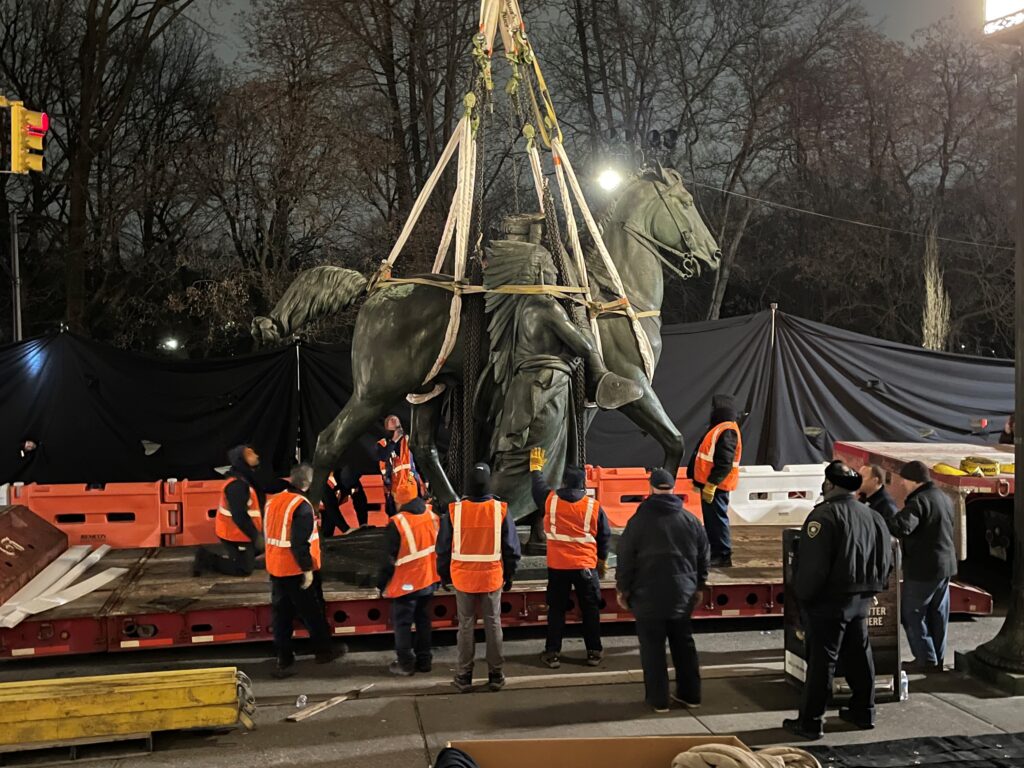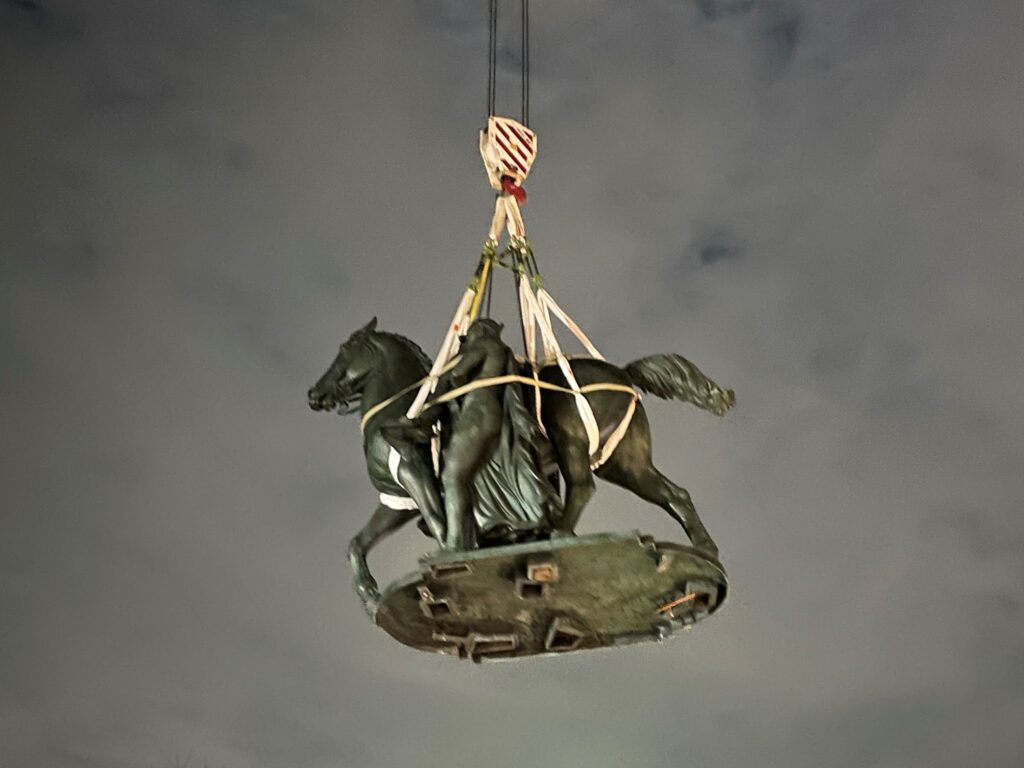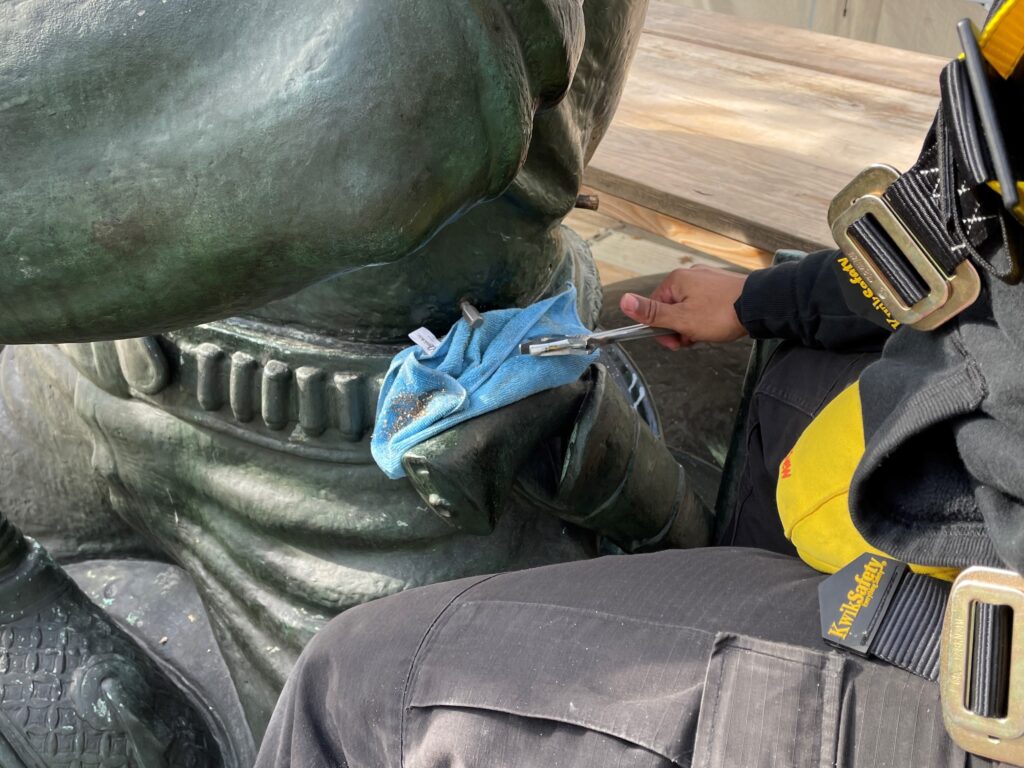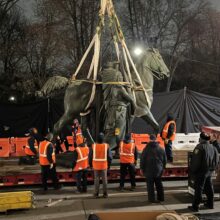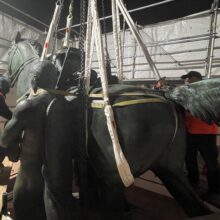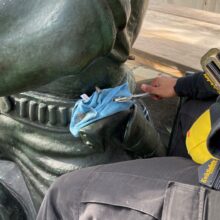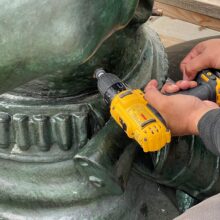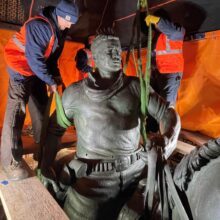Theodore Roosevelt Memorial Removal—Private
The Equestrian Statue of Theodore Roosevelt is a bronze sculpture created in 1939 by James Earle Fraser for the Roosevelt Memorial Association. Fraser was a notable American sculpture in the early 20th century, making numerous iconic works throughout the United States. Examples of his work include “The End of the Trail” created for the Columbian Exposition in Chicago, 1893; the Benjamin Franklin National Memorial in Philadelphia, 1906-1911; the Alexander Hamilton statue in Washington, D.C., 1923. The statue was originally placed at the entrance of the hall of dioramas in the American Museum of Natural History (AMNH) in New York, but was later moved outside, in front of the entrance to the museum.
At the turn of the 21st century the statue was embroiled in conflict. Like thousands of other statues nationwide, it was erected at a time when public institutions were very much colonialist in their practices and ideals. The arrangement of the figures in the Theodore Roosevelt statue is a visual representation of that, as Roosevelt sits both above and in front of the two people of color. In the late 2010s AMNH worked to engage with the public about the problems related to the statue and to colonialism in institutions; they mounted an exhibit called “Addressing the Statue,” as well as provided written context on placards surrounding the statue. In June 2020 AMNH announced the statue would be removed.
At the request of AMNH and the New York City Parks Department, the EverGreene conservation team assessed, researched, planned, directed, and oversaw the removal of the statue to storage. EverGreene developed the plan in partnership with Auer’s Moving & Rigging Company (Auer’s), and Nicholson & Galloway, Inc (N&G). EverGreene focused on the means and methods needed to dismantle and remove
the bronze sculpture, N&G on the dismantling of the stone pedestal, and Auer’s on the rigging and transport.
During the actual deinstallation EverGreene removed pins holding the bronze part of the statute together and the individual pieces were lifted off using a riggers attached to a crane. The bronze pieces were transported on flat-bed trucks to a storage facility. The team documented the statue before, during, and after the removal.
